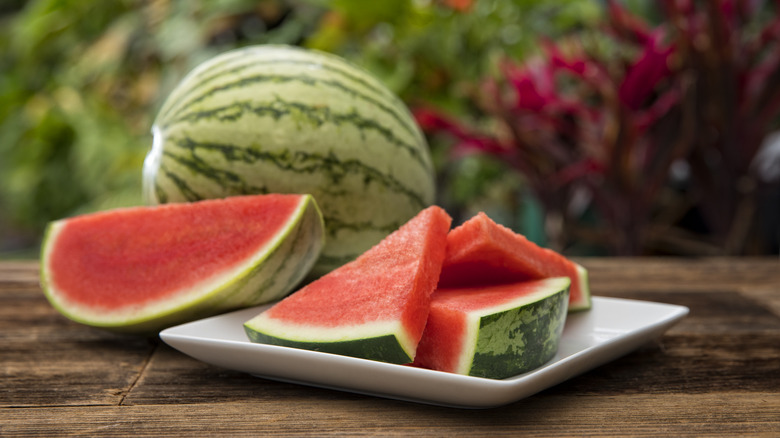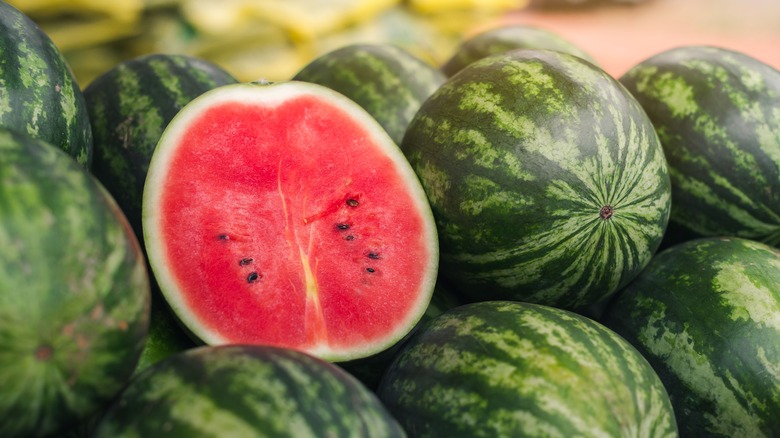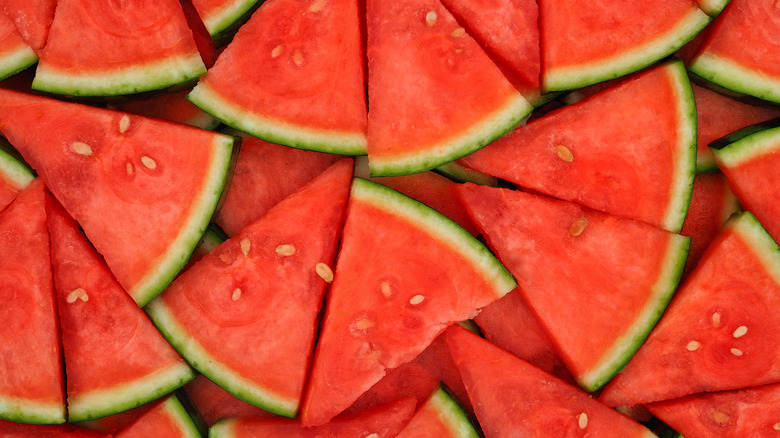Watermelon Didn't Always Have Its Vibrant Red Flesh
Today, we generally envision watermelons as a large, rotund fruit with a striped green skin, patches of syrup spots, bright red inner flesh, and a scattering of black seeds. However, watermelons have not always looked this way, nor have they always tasted so sweet.
As recently as the mid- to late-1600s, watermelons had a very different appearance, with paintings showing the fruit as being more gourd-like, possessing a thicker rind and more segmented edible flesh. This flesh was lighter in color, closer to pink than red, and contained many seeds. Even earlier, some 4,000 years ago, the Egyptians grew watermelons that were hard and bitter, mainly used as a source of water in a hot climate. This fruit held up well to storage, and, as countless generations have discovered, was easy to breed for certain desirable traits. As such, the journey toward a juicier, sweeter, more vibrantly colored fruit began.
How did the bitter watermelon become sweet?
Of course, breeding watermelons to be better-tasting was not an overnight process. Even with all the technology available today, successfully breeding a new variety of fruit can take up to 10 years. Selective breeding also requires the desirable trait to be present in the first place, usually by mutation in an existing breed.
In the case of the watermelon, ancient civilizations realized that watermelons were a reliable source for hydration. They bred the juiciest, largest, and sweetest watermelons of each crop, over time directing the breed standard toward the fruit we enjoy in modern times. The Egyptians, for instance, selectively bred watermelons to be not only juicier, but also softer, making them easier to open and eat.As the sweeter-tasting watermelons were bred, the fruit also became more vibrant in color. In other words, the two characteristics share a gene and can co-evolve. We can still see this phenomenon today, in that tastier watermelons have a deeper red flesh.
Today's watermelons aren't a perfect crop
Although the modern day's large, sweet, vibrant, and seedless watermelons seem like an ideal form of the fruit, these traits come at a cost. Seedlessness, for example, is the result of breeding a diploid watermelon (having two sets of chromosomes) with a tetraploid watermelon (having four sets of chromosomes as a result of chemical treatment) to create a sterile, triploid watermelon. Being seedless, these watermelons cannot breed additional seedless watermelons, so the entire process must be repeated each season.
Perhaps more challenging, however, is the balancing act between breeding fruit for quality and still maintaining some level of disease resistance. Unfortunately, as watermelons have been bred to be sweeter, they've lost their genes for bitterness — genes that simultaneously helped resist a common fungal disease. As such, today's watermelons are more prone to pest damage and disease than ever before, having lost their innate defense mechanisms through centuries of selective evolution.



